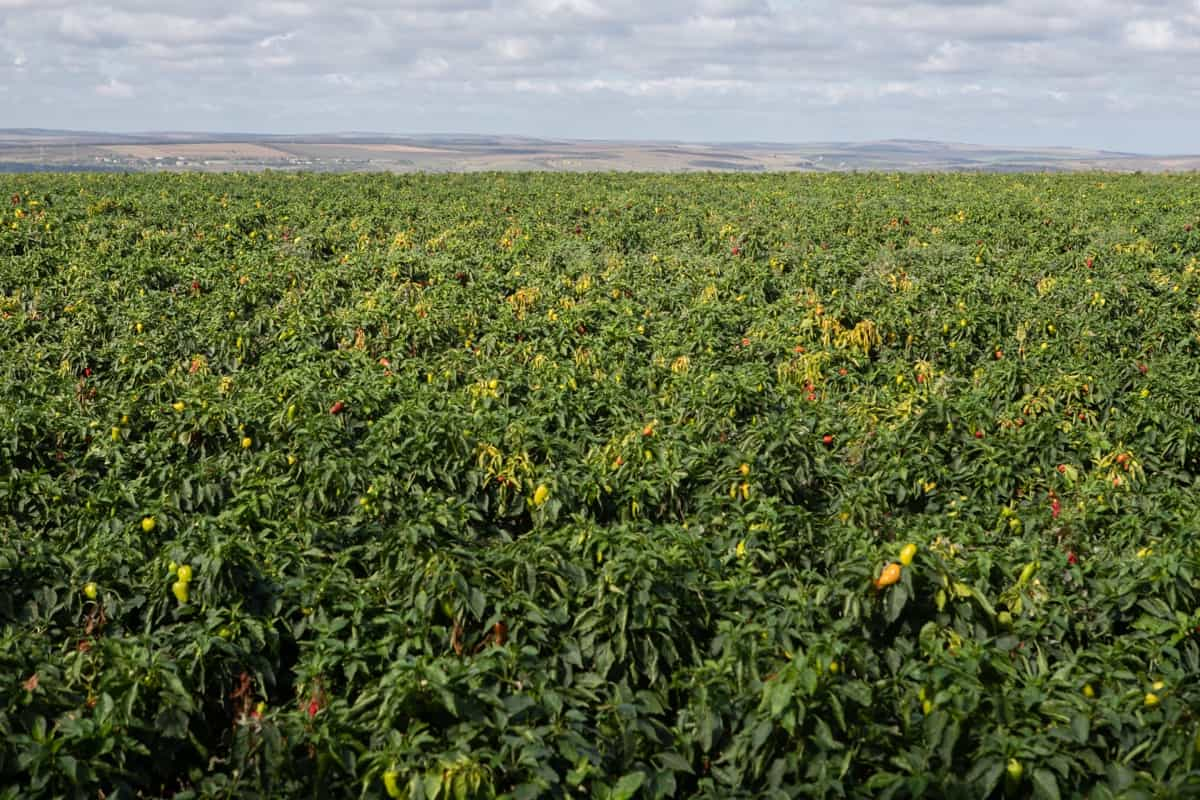Leaf curl is a common issue that affects chili plants and can be caused by different factors, including viral infections, fungal diseases, nutrient deficiencies, and environmental stress. Leaf curl in chili plants is defined by the curling, puckering, and twisting of leaves, which can impact the plant’s development and yield. Viral infections are among chili plants’ most prevalent causes of leaf curl. The tobacco mosaic virus and the cucumber mosaic virus are the two primary viruses that cause leaf curl in chili plants.

These viruses are typically spread via contaminated instruments, soil, or infected plant material. When the virus infects the plant, it can cause the leaves to curl, stunt development, and diminish yields. Fungal diseases such as powdery mildew and downy mildew are another source of leaf curl in chili plants. These fungi can affect plant leaves, causing them to curl, turn yellow, and ultimately die. Fungal diseases are typically transmitted by moisture and can be avoided by improving air movement, lowering humidity levels, and avoiding overhead watering.
Leaf Curl Management in Chilli/Peppers
Causes/Pathogen of Leaf Curl in Chilli
Begomoviruses, a group of plant viruses with a circular single-stranded DNA genome, cause the leaf curl disease in chili. These viruses are primarily persistently transmitted by whiteflies. Whiteflies are small, sap-sucking insects that are about 1.5 mm long. They have waxy white wings and a pale yellow body and are frequently found on the lower side of the leaves.
The Disease Cycle of Leaf Curl in Chilli
The disease cycle of leaf curl in chili starts when the whiteflies, the primary vectors of the virus, feed on an infected plant and acquire the virus. The virus then multiplies within the whitefly and is transmitted to a healthy plant when the whitefly feeds on it. The virus can also be transmitted from infected plant debris to healthy plants through contaminated tools, hands, or clothing.
Conditions Favorable for Leaf Curl Spread in the Field
- Leaf curl disease is caused by viruses spread by whiteflies and affects a wide range of plants, including chili. Several factors can impact the spread of the disease, including wind conditions, which can affect the distance that whiteflies can travel.
- Whiteflies are most common in the mid-to-late growing season and can survive in the environment through alternative hosts and weeds. Recent rainfall may also have aided the disease’s growth and spread.
- Chilli plants are most susceptible to infection in nurseries during the seedling and vegetative phases, particularly if infected transplants are used.
- Weeds can also raise your chances of getting infected. To control the spread of leaf curl disease, a variety of methods are used, including disease-free transplants, weed control, and the application of insecticides to control whiteflies.
Damage Symptoms of Leaf Curl
Leaf curl disease caused by the Chilli Leaf Curl Virus can cause significant damage to chili plants, affecting their growth and yield. One of the characteristic symptoms of the disease is the upward curling of leaf margins, along with the yellowing of veins and reduction of leaf size. The virus can also cause the swelling of leaf veins shortening of internodes and petioles. Older leaves may become leathery and brittle, and fruit formation in susceptible cultivars may be rudimentary and distorted.
If plants are infected early in the growing season, their growth may be stunted, resulting in a significant reduction in yield. Notably, the symptoms of leaf curl disease caused by the Chilli Leaf Curl Virus may be similar to those caused by the feeding damage of thrips and mites.
In case you missed it: Fusarium Wilt Management of in Chilli Peppers: Symptoms, Treatment, Chemical, Biological, Natural, and Organic Control

Yield Loss due to Leaf Curl on Chilli
The yield of chili is significantly affected by leaf curl disease caused by the Chilli Leaf Curl Virus, which is transmitted by whiteflies. The symptoms of the disease, including stunted plant growth, upward curling and puckering of leaves, rosette appearance of leaves on the top of the plant, and reduced internodes and petioles, can result in a reduction in yield of up to 100%. The thickening of veins, leathery and brittle older leaves, and failure to produce flowers and fruits are common symptoms of the disease.
Leaf Curl Management in Chilli by Cultural Method
Chili leaf curls can be managed through cultural methods such as crop rotation, removing infected plants, avoiding overhead irrigation, maintaining proper spacing between plants, and controlling weeds. These methods help reduce the spread of the virus and maintain healthy plant growth, ultimately leading to higher yields and better-quality crops.
Leaf Curl Management in Chilli by Biological Method
Natural enemies such as predatory mites, ladybugs, lacewings, and parasitic wasps are used to control the population of the insect vectors that spread the virus in biological techniques for managing leaf curl disease in chili plants. Furthermore, planting virus-resistant varieties, encouraging healthy plant development through proper irrigation and fertilization, and employing good sanitation practices can all help to reduce the incidence and severity of leaf curl disease.
Leaf Curl Management in Chilli by Chemical Method
- While there are no known effective methods for preventing or reducing the virus, chemical control methods can help manage the vector that spreads the virus.
- Imidacloprid and dinotefuran are the most commonly used chemical control methods for the chili leaf curl virus.
- Imidacloprid and dinotefuran belong to a class of insecticides known as neonicotinoids.
- Chemical work on insects, including the whitefly that spreads the chili leaf curl virus. These insecticides are commonly applied as foliar sprays or drenches to the soil.
Leaf Curl Management in Chilli by Organic/Natural Method
- Control whitefly populations to reduce virus transmission. Neem oil or horticultural oils can be used, which should be applied thoroughly to cover the plants, particularly the lower side of the leaves where whiteflies are commonly found.
- Introduce natural enemies such as lacewings, big-eyed bugs, and minute pirate bugs to control whitefly populations.
- Use insecticidal soap or garlic oil spray to control whiteflies and other pests.
Preventive Measures for Control of Leaf Curl inChili
- Use plant-resistant species and extract seeds only from virus-free plants.
- Create a barrier crop around the fields by raising at least two rows of crops such as maize, sorghum, or pearl millet.
- Establish nylon nets over nursery plants to protect them from whiteflies.
- Regularly monitor the crops for symptoms of curled leaves and stunted growth.
- Place sticky yellow traps or sheets in the field to attract whiteflies.
- Grow seedlings under nets to prevent whiteflies from attacking them.
- Keep the field and surrounding area weed-free.
- Destroy early-infested plants by burning them.
- Plow deep or burn all plant debris after harvest.
- Encourage beneficial insects by growing mixed crops.
In case you missed it: Powdery Mildew Management in Chilli Pepper: Symptoms, Identification, Treatment, Chemical, Biological, Natural, and Organic Control

Conclusion
Cultural, chemical, biological, natural, and organic methods can control leaf curl in chili plants, which can have major economic effects. Sanitation, crop management, and resistant varieties can lower disease incidence and severity, improving crop health and yields.
- Deworming Schedule for Dogs/Puppies: A Beginners Guide
- How to Prevent and Control Parasites in Goats
- Beneficial Insects in Pest Management
- Natural Solutions for Pest Control in Flower Gardens
- Types of Fungicides Used in Agriculture
- Common Issues in the Fruit Development Stage of Pomegranate Farming
- Fruit Development Issues in Papaya: Easy Solutions and Treatment
- Soil-Borne Diseases and How to Protect Your Plants
- Practices to Prevent Disease Spread in the Garden